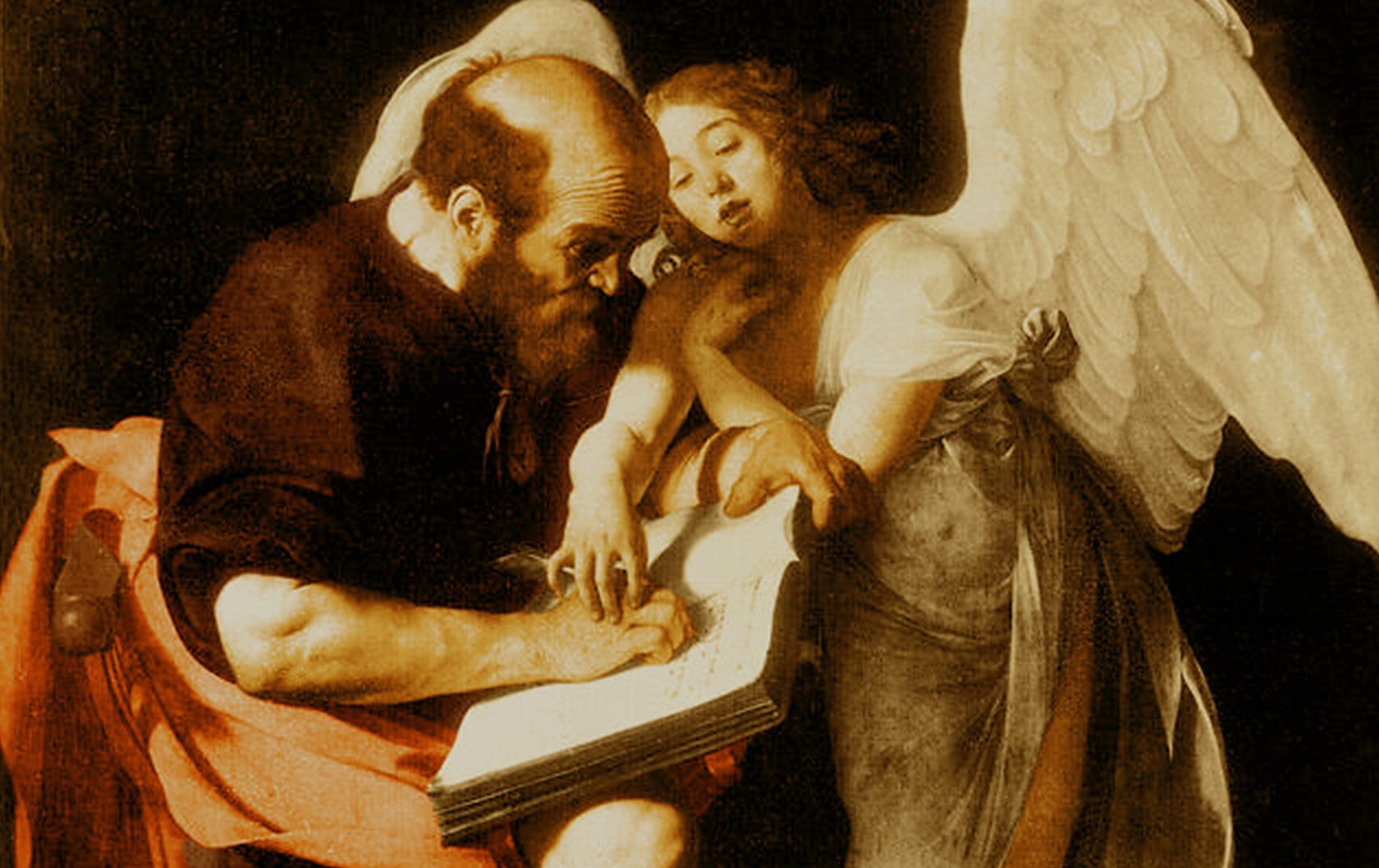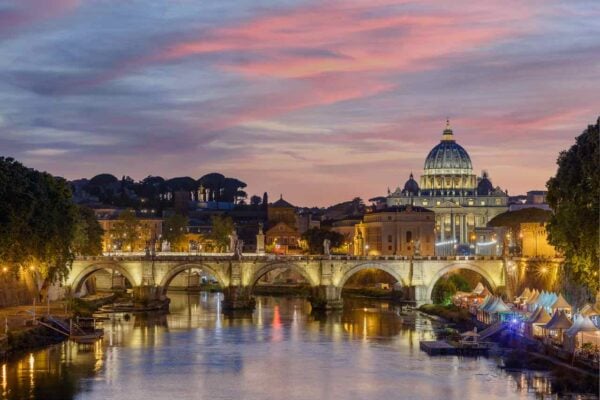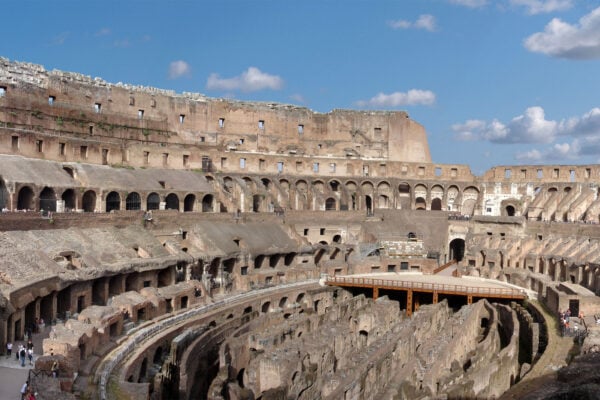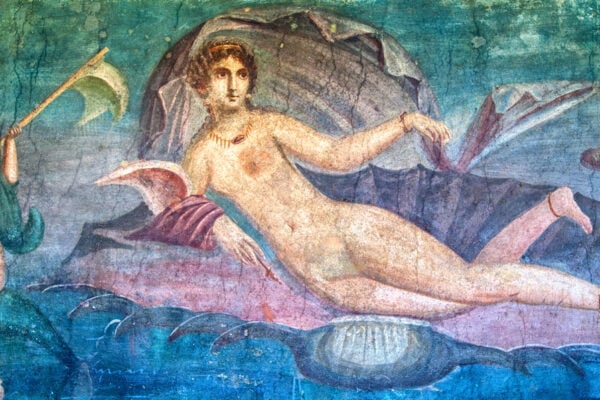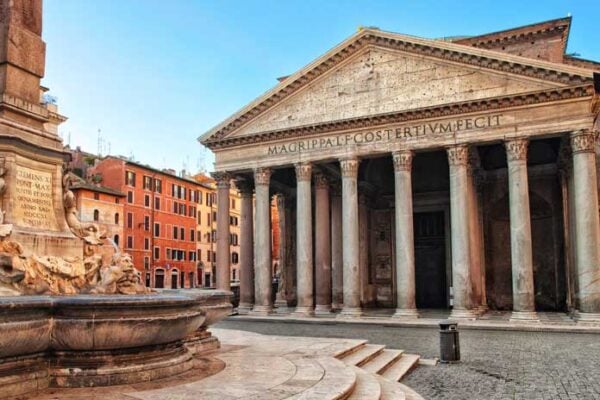Caravaggio was the most original and influential Italian painter of the 17th century. His style greatly influenced European artists such as Rubens and Rembrandt and revived Italian painting from the fantasy of post Renaissance and late 16th century Mannerist art. He rejected idealized beauty and started reproducing naked reality. You can see 18 original Caravaggio paintings in Rome, many free to visit in churches.
Revolutionary Idea – Real People!
Even in his religious paintings, he presented a completely new model that reflected real life. You can see how he represented saints as common men and women, humble, lowly, with dirty feet and hands, sun-browned complexions and wrinkled skin. Moreover, he dared to use prostitutes to pose for his beautiful Madonnas and this was really outrageous!
Caravaggio reflected a religious movement of the time that favored a return to poverty, sobriety and the purity of the beginning of Christianity, which was in great contrast to the magnificence and the richness of the official Church of Rome. It’s no surprise that the official church labeled many of his paintings as “lacking in decorum.” For example, when he painted St. Matthew and the Angel, the first version of the painting was rejected, and the artist had to repaint it. In that first version, St. Matthew was so human and real. He was represented as an illiterate, rough, humble person, sitting cross-legged with his feet prominent in the foreground. There was an angel next to him holding his hand and teaching him to write while composing his Gospel. He seemed to be staring in amazement at his own writing.
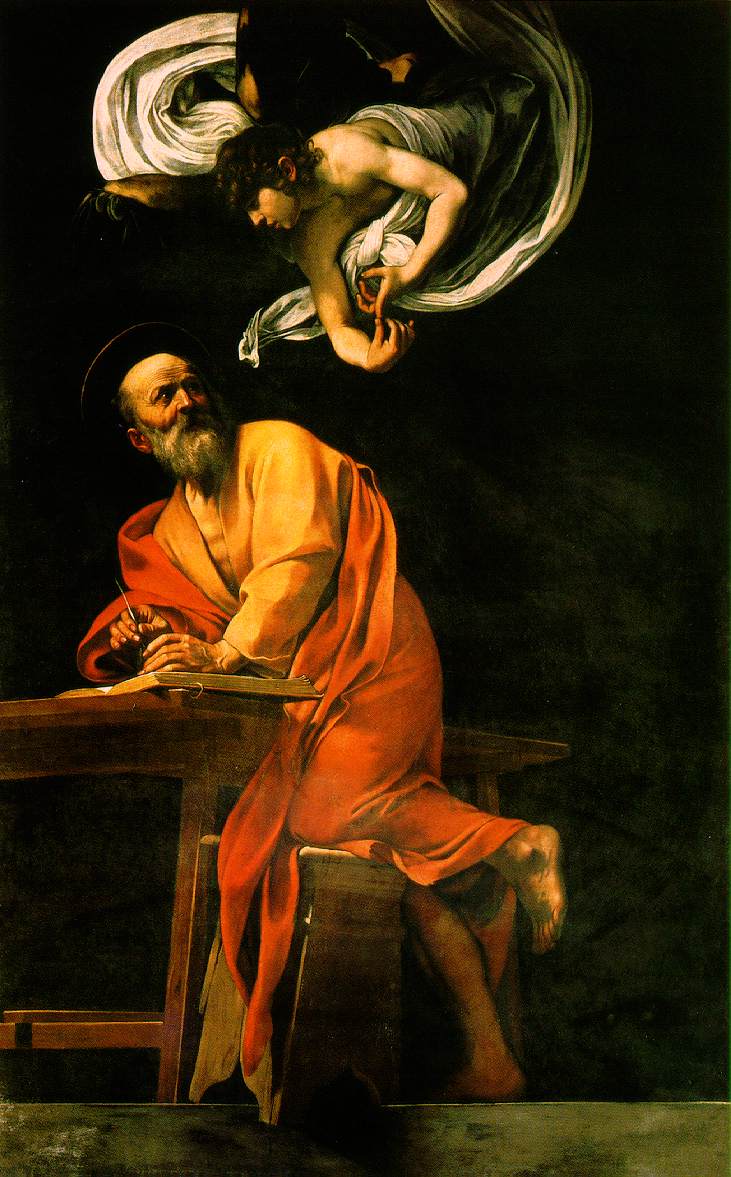
Matthew and the Angel (2nd version)
The second version – the one you can see today in San Luigi dei Francesi right next to Piazza Navona in Rome – transformed the saint into a learned and well-groomed man, inspired, but not physically guided by the angel who is not next to him anymore, but above him. St. Matthew is no longer amazed; he just seems surprised by the divine voice telling him what to write in the Gospel.
Another painting that “lacked decorum” is that of Madonna of the Papal-Grooms or Madonna of the Serpent. This altarpiece was briefly exhibited in the Vatican before its removal due to its unorthodox portrayal of the Virgin Mary and of St. Anne, her mother. It was sold to Cardinal Scipione Borghese, and now hangs in the Galleria Borghese where you can see it today.
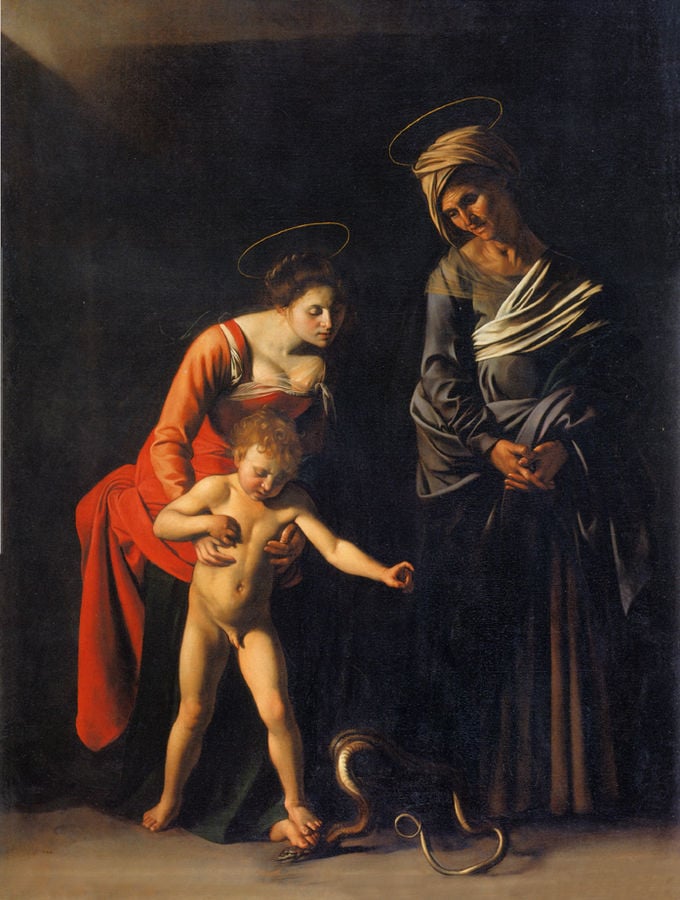
Madonna and the Serpent
The theme is the trampling of the serpent that represents evil and original sin. The Virgin Mary places her foot on the serpent’s head, while little Jesus presses down on her foot to help crush it. Watching the scene is St. Anne, the mother of Mary and patron saint of the horse-grooms. The three figures behave naturally as if in the intimacy of a common family. The painting was removed almost as soon as it was hung over the altar. Why? Because the Virgin Mary is represented as a common woman; her dress is too low-necked and she is wearing it with the skirt hitched up and knotted on her side like a normal woman would do. Jesus was considered too old to be completely naked, and St. Anne is painted as an old woman; lined and weary, her hands in the foreground show dirty nails. And the worst was that the model who posed for the Virgin Mary was Lena, a well known prostitute of the time!
See Caravaggio Paintings in Rome
There are many places to see Caravaggio paintings in Rome, including the Church of Sant’Agostino. Italy Perfect highly recommends Cristina, the knowledgeable guide who prepared this article. She will happily will bring Caravaggio and Rome to life to you!
Contact Italy Perfect at [email protected] or 1-888-308-6123 to arrange your Roman accommodations and set up your Caravaggio in Rome tour with Cristina.
*The image of the first version of Matthew and the Angel is a colorized version using black and white photos of the painting that was destroyed.
Photos of the art are in the public domain from Wikipedia. Featured photo.
